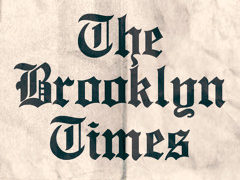|
Michael_Novakhov shared this story from |
b’
Russian military shifts and stinging Kremlin criticisms of Ukraine are raising questions about Moscow’s aims. In 2014, Russia’s seizure and annexation of Crimea and invasion of eastern Ukraine led to a strong Western responsexe2x80x94a jump in military aid to Ukraine, a NATO buildup on its eastern flank, and unprecedented sanctions. What could be in store now?
There are multiple reasons to be wary.
On November 1, Politico reported that satellite images showed a xe2x80x9cbuildup of armored units,xe2x80x9d tanks, and self-propelled artillery in Russia near Belarus, and a relocation of tanks from near Moscow to Ukraine’s border. President Biden’s security advisor, Jake Sullivan, said the United States was consulting with allies and partners.
Earlier Russian military actions also spurred unease. In September, Russia and Belarus conducted a huge Zapad-21 military exercise, xe2x80x9cfar more robustxe2x80x9d than one four years prior. Last spring in an out-of-cycle move, Russia shifted substantial forces closer to Ukraine and into Crimea. The U.S. European Command raised its alert level, and U.S. Chairman of the Joint Chiefs of Staff Mark Milley called Russian Chief of the General Staff Valery Gerasimov.
Kremlin rebukes also cause anxiety. On November 1, Foreign Minister Sergei Lavrov warned of xe2x80x9cattempts to carry out provocationsxe2x80xa6and drag Russia into some kind of combat.xe2x80x9d Some in the West might see this as cover for renewed aggression. On October 22, Russian President Vladimir Putin said a visit by Secretary of Defense Lloyd Austin to Ukraine had xe2x80x9copened doorsxe2x80x9d for it to join NATO. This is a distant prospect. Putin aide Dmitri Medvedev claims Ukraine’s leaders are hostage to xe2x80x9crabidxe2x80x9d nationalist forces, which is erroneous.
That said, the Kremlin’s intentions regarding Ukraine remain uncertain. Some earlier troubling signs did not presage imminent threats. On November 3, Gen. Milley described Russian movements as not xe2x80x9covertly aggressive.xe2x80x9d On November 8, however, CNN reported that earlier in the week in Moscow, Central Intelligence Agency Director William Burns had voiced xe2x80x9cseriousxe2x80x9d concerns to Putin about Russia’s military buildup along Ukraine’s border. And on November 10, Secretary of State Antony Blinken warned Moscow against making a xe2x80x9cserious mistakexe2x80x9d in Ukraine.
Perhaps Moscow seeks only to discourage further Western military support for Ukraine. But if Russia were to heighten threats, the West could take stronger measures. Those the West took after 2014 might hint at how the West could raise costs to Russia.
The United States and NATO have provided substantial training, equipment, and advisory assistance to Ukraine. The United States has sent modern armed patrol boats and portable Javelin missiles, lethal against Russian tanks. In September, the United States announced further aid in response to the xe2x80x9cmajor increase in Russian military activityxe2x80x9d along Ukraine’s border.
if Russia were to heighten threats, the West could take stronger measures. Those the West took after 2014 might hint at how the West could raise costs to Russia.
A second Western response has been NATO’s eastern build-up of forces. It now rotates four battalion-sized land combat units to Estonia, Latvia, Lithuania, and Poland. A multinational brigade, including air power, rotates to Romania. Since 2014, the United States has spent billions of dollars (PDF) to enhance collective security in Europe.
A third dimension of the Western response is sanctions. They might have reduced Russia’s economic growth by as much as 2.5-to-3.0 percent per year. Sanctions combined with the pushback by Ukrainian fighters against Russian forces in summer 2014 in eastern Ukraine might have helped dissuade the Kremlin from attempting to take all of eastern and southern Ukraine. The Kremlin had hinted that its goal was to seize what it calls Novorossiya.
If it were to become necessary, what new steps might the West consider?
One may be supplying a wider range of lethal weaponry. The U.S. House Committee on Armed Services has called for a Biden administration report on how to help Ukraine address air and missile defense gaps. The United States could send Ukraine portable Stinger air defenses or Iron Dome defenses against short-range missiles.
NATO could further buttress eastern defenses. A RAND study found that at present xe2x80x9cNATO cannot successfully defend the territory of its most exposed members.xe2x80x9d Wargaming suggests that a force of seven brigades could prevent a xe2x80x9crapid overrunxe2x80x9d of the Baltics. This might involve an order of magnitude more combat power. NATO states could also send more warships into the Black Sea, subject to limits in the Montreux Convention.
Tougher sanctions might be a third response. Sen.Lindsey Graham (R-S.C.) warns of xe2x80x9csanctions from hell.xe2x80x9d In 2017 by near-unanimous votes in both chambers, Congress passed a sweeping sanctions bill aimed mainly at Russia. A recent Biden administration review cautioned that economic and financial sanctions are best used in xe2x80x9ccollaboration with our allies (PDF).xe2x80x9d In 2014, such coordination with Europe amplified the effect of Western sanctions.
Now is probably not the best time to be breathless about the risk of increased Russian threats in Ukraine. This may, or may not, be Moscow’s purpose. But the West will be watching.
William Courtney is an adjunct senior fellow at the nonprofit, nonpartisan RAND Corporation and a former U.S. ambassador to Kazakhstan, Georgia, and the U.S.-Soviet commission to implement the Threshold Test Ban Treaty.
This commentary originally appeared on The Hill on November 13, 2021. Commentary gives RAND researchers a platform to convey insights based on their professional expertise and often on their peer-reviewed research and analysis.
‘


